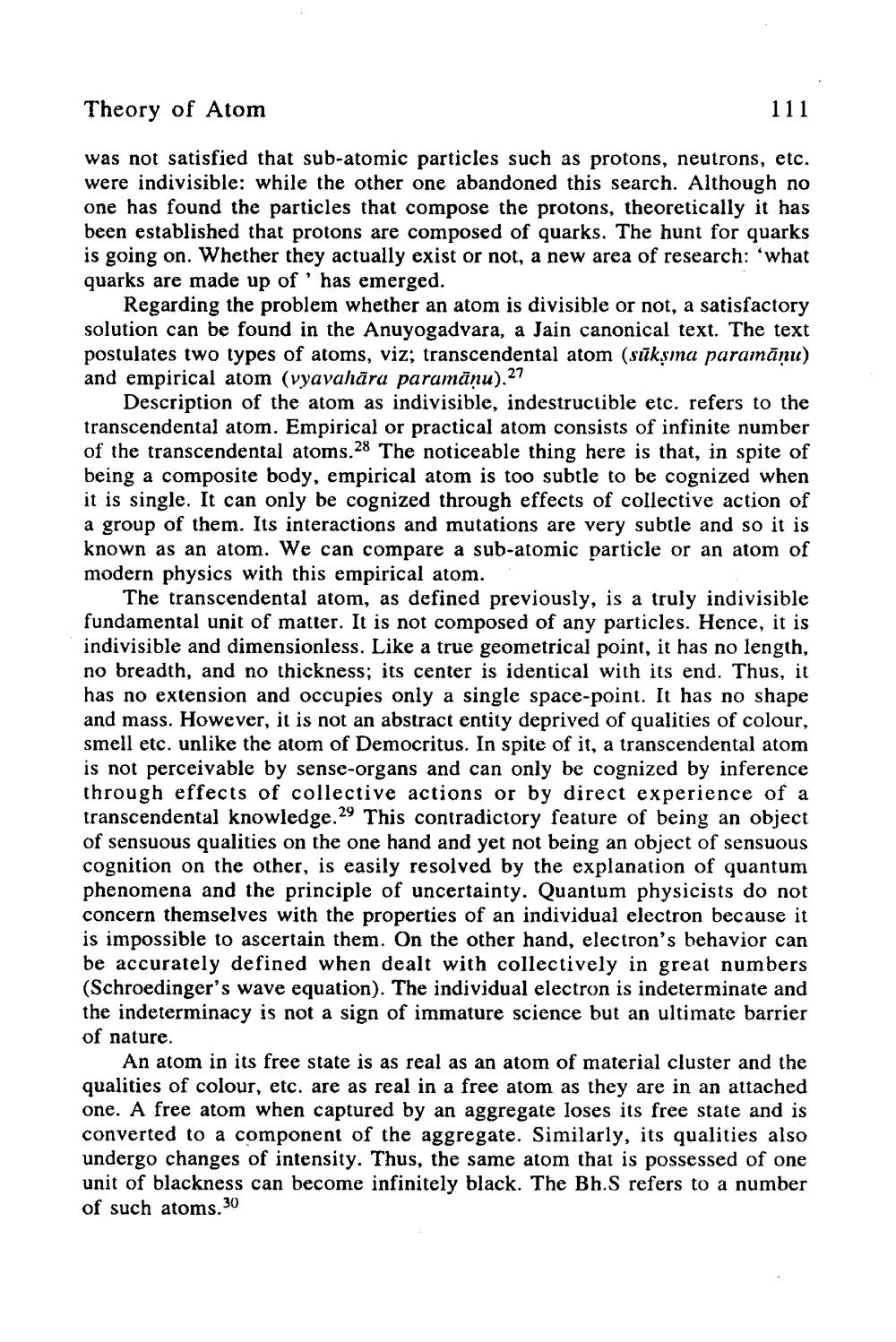________________
Theory of Atom
was not satisfied that sub-atomic particles such as protons, neutrons, etc. were indivisible: while the other one abandoned this search. Although no one has found the particles that compose the protons, theoretically it has been established that protons are composed of quarks. The hunt for quarks is going on. Whether they actually exist or not, a new area of research: 'what quarks are made up of' has emerged.
111
Regarding the problem whether an atom is divisible or not, a satisfactory solution can be found in the Anuyogadvara, a Jain canonical text. The text postulates two types of atoms, viz; transcendental atom (sūkṣma paramāņu) and empirical atom (vyavahāra paramāņu).27
Description of the atom as indivisible, indestructible etc. refers to the transcendental atom. Empirical or practical atom consists of infinite number of the transcendental atoms.28 The noticeable thing here is that, in spite of being a composite body, empirical atom is too subtle to be cognized when it is single. It can only be cognized through effects of collective action of a group of them. Its interactions and mutations are very subtle and so it is known as an atom. We can compare a sub-atomic particle or an atom of modern physics with this empirical atom.
The transcendental atom, as defined previously, is a truly indivisible fundamental unit of matter. It is not composed of any particles. Hence, it is indivisible and dimensionless. Like a true geometrical point, it has no length, no breadth, and no thickness; its center is identical with its end. Thus, it has no extension and occupies only a single space-point. It has no shape and mass. However, it is not an abstract entity deprived of qualities of colour, smell etc. unlike the atom of Democritus. In spite of it, a transcendental atom is not perceivable by sense-organs and can only be cognized by inference through effects of collective actions or by direct experience of a transcendental knowledge.29 This contradictory feature of being an object of sensuous qualities on the one hand and yet not being an object of sensuous cognition on the other, is easily resolved by the explanation of quantum phenomena and the principle of uncertainty. Quantum physicists do not concern themselves with the properties of an individual electron because it is impossible to ascertain them. On the other hand, electron's behavior can be accurately defined when dealt with collectively in great numbers (Schroedinger's wave equation). The individual electron is indeterminate and the indeterminacy is not a sign of immature science but an ultimate barrier of nature.
An atom in its free state is as real as an atom of material cluster and the qualities of colour, etc. are as real in a free atom as they are in an attached one. A free atom when captured by an aggregate loses its free state and is converted to a component of the aggregate. Similarly, its qualities also undergo changes of intensity. Thus, the same atom that is possessed of one unit of blackness can become infinitely black. The Bh.S refers to a number of such atoms. 30




